With these bigger-screen smartphones, watch videos, enjoy playing games, or go live on social media. You will need two hands to use each phone here. Almost all high-end phones are available as an oversized option.
With more rolling screens and a longer lifespan on a single charge, the best big-screen phones include more sophisticated cameras with more lenses and the best optics and sensors on the market.
If you’re ready to be a big hit with your next phone, we’ve compiled a list of your favorite phones.
Best Budget Biggest Screen Smartphone in 2024
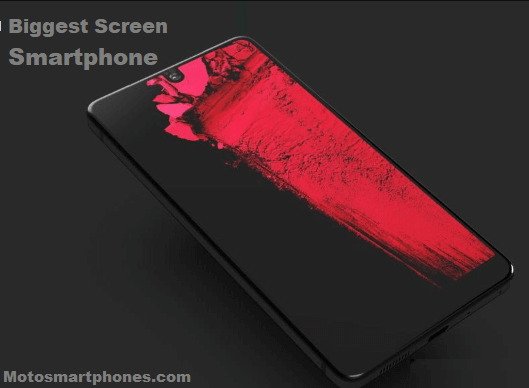
This list is for the 10+ large-screen phones for 2024. We will do our best to help you understand our list of giant-screen mobile phones.
1. Samsung Galaxy Z Fold 5
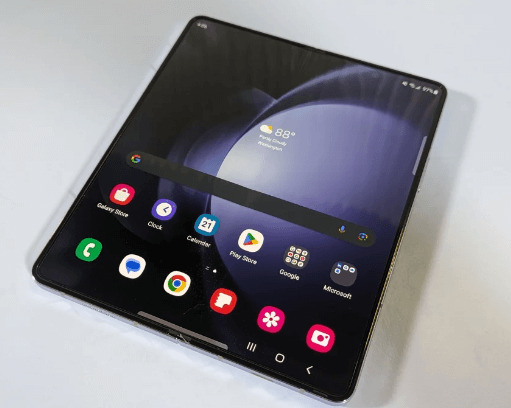
The Samsung Galaxy Z Fold is probably the most recognizable phone in the foldable market, with 7.6 inches of the most giant screen. The Samsung Galaxy Z Fold has a 7.6-inch external display when unfolded and a 6.2-inch external display and has been using the same screen size for four generations.
The latest phone, the Samsung Galaxy Z Fold 5, did not change the screen size from the standard 7.6-inch internal display and instead went with the 6.2-inch external display that the Samsung Galaxy Z Fold 2 has had since.
Over time, the Galaxy Z Fold’s external screen underwent some three-dimensional changes to break away from the existing candy bar shape, but there were no significant changes.
The only time the device has changed in size is from the first generation Galaxy Fold to the Galaxy Z Fold 2. The original Samsung Galaxy Z Fold had a much smaller 4.6-inch external display and a 7.3-inch internal display.
The size of the Galaxy Z Fold has remained unchanged across four iterations of the phone, so it remains to be seen whether Samsung will change things too drastically with its next launch.
2. Google Pixel 8 Pro
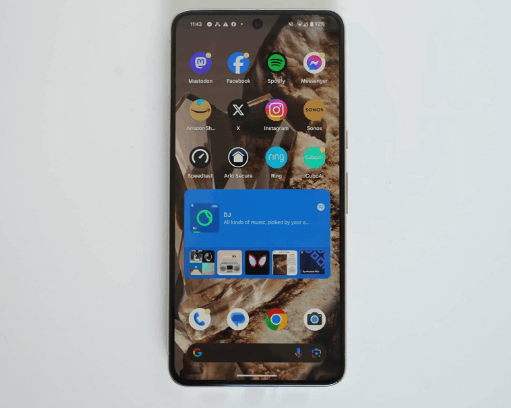
The Google Pixel 8 Pro is a larger, improved version of the Pixel 8 and includes a 6.7-inch OLED screen with a 120Hz refresh rate, making it one of the best biggest screen smartphones 2024. It also contains a fantastic 5x optical zoom lens on the back.
The Pixel 8 Pro is one of the fastest phones you can buy. Scrolling and navigating apps is very smooth, and certain features, like Google Assistant response, are much quicker than on other phones thanks to Google’s 3rd generation Tensor processor. The new screen is more significant and brighter than the Pixel 8, supporting up to 2,400 nits of outdoor brightness.
Pixel 8 Pro comes with a third 48-megapixel lens on the back, and a 5x zoom preserves details even when fully zoomed in. Take the best photos on Android. You don’t have to fiddle with the phone settings we tested to get amazing images. However, the Pixel 8 Pro adds manual controls for more precise adjustments to white balance, focus, shutter speed, ISO, etc.
Take control of your photos. You can also use the full-resolution 50-megapixel primary camera instead of relying on a compressed 12-megapixel image.
Flaws, but not dealbreakers: The Google Pixel 8 Pro’s large size can make it challenging to handle even with large hands, and without a case, it’s slippery and difficult to hold. And just like the price increases for the Pixel 8 and its models, the Pixel 8 Pro is no longer the value flagship it once was.
3. HUAWEI Mate 20 X![]()
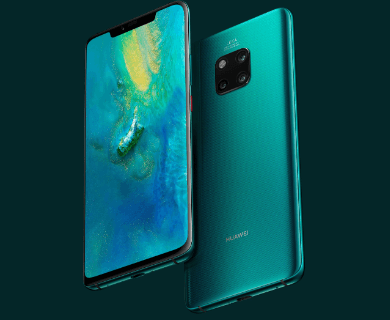
HUAWEI Mate 20 X, launched by Huawei, is the world’s first smartphone with a 7.2-inch AMOLED display, making this phone the most prominent smartphone screen in 2024. HUAWEI Mate 20 X is also one of the world’s first 5G/4G dual SIM dual standby smartphones.
This allows it to meet the needs of dual-SIM consumers in the 5G era while maintaining compatibility with various other network standards, such as 4G, 3G, and 2G.
Besides that, HUAWEI Mate 20 X has an excellent power management system. It has a graphene-based and liquid-based cooling system, a 4200mAh large-capacity battery, and 40-watt SuperCharge charging technology.
4. Samsung Galaxy S23 Ultra![]()
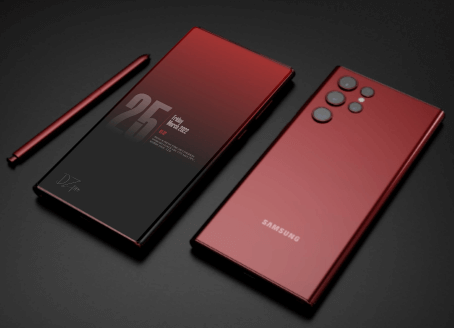
The Galaxy S23 Ultra is a great phone known for its large, beautiful screen. Use it as a reference in the market. Samsung designed this phone with a perfect finish and a camera block integrated into the back panel, and it’s a formula that works. Despite the sizeable 6.8-inch board, the phone feels good to grip, and the buttons are easy to access. One UI makes it easy to use with one hand.
The AMOLED panel is protected by Gorilla Glass Victus 2, making it shatter-resistant. The phone is a great companion for daily use due to its excellent fluidity and bright colors that are pleasing to the eye, although not always natural. Perfect for watching videos regularly.
The Galaxy S23 Ultra has the powerful Snapdragon 8 Gen 2, so it will have no trouble running even the most demanding games. The phone’s heat is well-controlled and boasts an impressive battery life of at least two days. However, the charging speed can be improved up to 45W.
Samsung has solidified its lead in the camera department with the S23 Ultra. The phone’s versatility is unrivaled, especially with its x3 and x10 zoom lenses and excellent ultra-wide angle capabilities. No matter the situation, your phone camera produces beautiful photos.
5. Huawei Mate X2

Huawei has appeared once again with the Mate X2. The Huawei Mate Like the Honor phones we discussed earlier, the Huawei Mate X2’s internal display is limited to a 90hz refresh rate.
Although it doesn’t have Google Play, the Huawei Mate X2 is the first Huawei phone on this list to run Android. The Mate X2 sits within the bubble its successor occupies. It’s a great phone that would have been fantastic to launch in the US without a ban on Huawei products.
That’s not to say that this phone would have been the Galaxy Z Flip’s killer, though, because there’s one massive problem plaguing it: its price.
6. Samsung Galaxy Fold 4
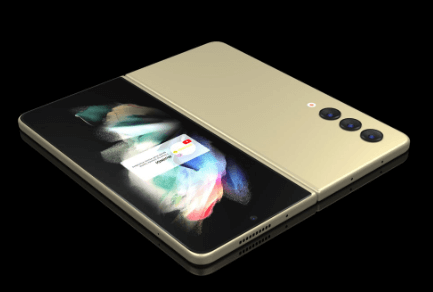
The Samsung Galaxy Z Fold 4 is the biggest Android phone you can buy, with a screen size of 7.6 inches when unfolded and 6.2 inches when folded. The Galaxy Z Fold 4 is the fourth version of Samsung’s foldable smartphone, which opens to reveal a small tablet.
The Galaxy Z Fold 4’s updated taskbar and operating system, Android 12L, make switching between applications easier when multitasking.
In addition to the improved camera, more prominent front display, and brighter main screen, Samsung offers these improvements with this model over its predecessor in a more streamlined design.
Powered by Qualcomm’s latest and greatest CPU, Snapdragon 8+ Gen 1, the most powerful chip currently available for Android, Fold 4 operates quickly and fluidly.
7. OnePlus 11
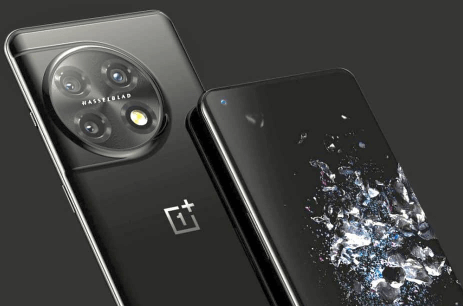
The OnePlus 11 is a new flagship phone from OnePlus that is a feast for the eyes. It has a large 6.7-inch AMOLED panel with 2K resolution. The screen also has an adaptive refresh rate that ranges from 1 to 120 Hz. Suitable for watching video content. Despite its large size, the OnePlus 11 is designed to handle easily. The rounded edges and satin texture on the back provide a comfortable grip.
The OnePlus 11 runs a Snapdragon 8 Gen 2 chip, making it a powerhouse that can run any game without lag. It still maintains adequate heat control. The phone also boasts an impressive battery life lasting up to two days on a single charge. It also supports 100W fast charging, allowing complete charging in just 20 minutes.
Regarding photography, the OnePlus 11 has three lenses on the back: a 50-megapixel wide-angle lens, a 48-megapixel ultra-wide-angle lens, and a 32-megapixel telephoto lens. Optics x2, portrait, and macro modes are good, although the ultra-wide lens can produce somewhat questionable color results.
The OnePlus 11 is an excellent phone with fantastic build quality and stands out as one of the best options if you’re looking for a phone with a large screen.
8. Motorola Moto G200
- 6.8 inches screen with 1080 x 2460 pixel
- Qualcomm Snapdragon 888+ 5G processor
- 8GB of RAM with 128GB storage
- 128GB Storage, 8GB RAM
- Android 11 operating sys
The Moto G200 is a unique addition to Motorola’s affordable mid-range Moto G line with a giant screen of 6.8 inches, making it a big-screen mobile phone.
One of the few devices is the Qualcomm Snapdragon 888+, which delivers flagship-class performance on a budget. In contrast, the extended 6.8-inch display has ultra-smooth 144Hz visuals, which are ideal for gaming. Ready For support also brings desktops. It’s like the user experience when connecting to an external display.
The large 5000mAh battery also ensures long battery life and 33W fast charging means you don’t have to wait for the phone to recharge for hours.
Read the full detailed review of the Moto G200
9. Samsung Galaxy Note 20 Ultra
- 6.9 inches Dynamic AMOLED 2X display
- With S Pen and Samsung Notes
- Super fast processor
- Battery lasts all day with fast charging
- Up to 1TB of expandable memory
Galaxy Note series phones have often been ridiculed for their size and usually exceed size limits. The Note 20 Ultra has a 6.9-inch screen, but luckily, the curved sides and narrow edges mean the phone itself isn’t significant.
It’s still more than a handful, but it’s not entirely outrageous by today’s standards. You must apply some force to pull it out partially and then completely pull it out with your fingertips.
The S-Pen can be inserted upside down; luckily, you won’t damage your phone if you accidentally try to put it upside down.
10. Motorola Moto G9 Plus
- 6.8-inch LTPS panel of with 386 PPI
- Qualcomm Snapdragon 730 processor
- 4GB of DDR4 RAM with 128GB of internal storage
- Up to 512 GB of microSD card support
The G9 Plus is a 6.8-inch handset, and its LTPS panel offers the highest resolution in the range of 2,400 x 1080 pixels (386 PPI). HDR10 supports the bonus, so there is enough screen space to satisfy video viewers and gamers.
Moto G9 Plus’s screen measures 78.1mm wide, 169.98mm high, 9.69mm thick, and weighs 223g, making it the most significant phone in 2024. The frame and back are plastic, and there is no IP rating for dust/water resistance, but Motorola says the G9 Plus has a water-repellent design.
The Moto G9 Plus runs on Qualcomm’s mid-range Snapdragon 730G SoC despite only having 4GB of RAM. The Android 10 OS has only a few decorations—128 GB of internal storage with a MicroSD card. Motorola offers a transparent bumper that mitigates the slippery backplate and the tendency to collect fingerprints, making the handset more significant.
The fingerprint reader is built into the power button on the right edge of the handset, just below the volume rocker. There is a dedicated Google Assistant button on the left, a 3.5mm headset jack on the top, and a USB-C charging/connection port on the bottom.
Motorola claims the 5,000mAh battery can last two days to compensate for the large screen. Of course, what you get will depend on how you use the phone, and a 6.8-inch screen can drain a lot of battery. Still, the supplied TurboPower 30 quick charger delivers up to 12 hours of power in just 10 minutes, allowing fast charging.
11. Samsung Galaxy S22 Ultra
- Bigger screen wit highest resulation
- Portrait mode with auto detects and adjusts
- With new S Pen
- Long lasting battery life
- With a 45W super fast charging
The Galaxy S22 Ultra is the complete successor to the Note 20 Ultra in every way except the name. The expansive and biggest screen smartphone 2024 with a 6.8-inch LTPO AMOLED display offers a high WQHD+ resolution and an adaptive refresh rate of up to 120Hz. Google’s long-term software support furthers the Pixel and rounds off an impressive list of experts.
The design is distinctly different from the rest of the Galaxy S22 family. It features an integrated S Pen stylus that extends capabilities that outperform most competitors, especially in terms of productivity.
Despite the familiar-looking camera hardware, Samsung’s upgrade makes it one of the best systems on any phone. The 108-megapixel primary shooter is backed by an ultra-wide and two telephoto lenses at different zoom levels, and zoom performance has been improved, especially from the previous model.
12. Motorola Moto G100 5G
- 6.7 inches FHD+ screen with 2520 x 1080 pixel
- Snapdragon 870 5G Processor
- 8GB of RAM with 128GB storage
- 64MP camera can record 6K UHD video
- 5G network compatibil
The Moto G100 is a recently released phone. It’s the monster cheapest, most giant-screen Android phone of 2024. This phone is now available in the US, UK, Canada, and other countries. The G100 boasts a 6.7-inch FHD+ display and a 90Hz refresh rate.
The real story of the G100 is the power hidden beneath the display. This is the first Motorola phone powered by the Snapdragon 870 processor. You will find 5G network compatibility, including 8GB of RAM and 128GB of native storage.
There’s a lot to like about the Moto G100, including a rear quad-camera setup that makes headlines with a 64MP primary camera capable of recording 6K UHD video.
Read: Motorola Moto G100 Review
13. Oppo Find X5 Pro
- Best class display of 6.7-inches
- Snapdragon 8 Gen 1 chipest
- 12GB of RAM with 256GB storage
- 5000mAh battery with 80W wired charging
- With 50W of wireless charg
The Oppo Find X5 Pro is a phenomenal phone in every way. The 6.7-inch 10-bit 120Hz QHD+ panel is one of the best displays on any phone, and the high-end Oppo Find X5 Pro supports a top-of-the-line camera that boasts 80W wired and 50W wireless charging, a 5000mAh battery, and a 50Mp sensor on both sides—primary and ultrawide lenses.
You will have to live without a periscope zoom lens. The telephoto here is only 2x zoom. But with all three rear lenses, the results are exceptional. The design is also unique thanks to the sleekly sloping camera module embedded in the phone’s body.
In terms of performance, the new Find X5 Pro has a Snapdragon 8 Gen 1 chip, 12GB of RAM, and 256GB of storage, making it hard to beat. It’s not cheap, so you have to be willing to pay.
14. Motorola Edge Plus (2022)
- 6.7 inches OLED screen with smooth 144Hz
- Snapdragon 8 processor
- With 60MP of selfie cameras
- Good battery life with 30W powerfull charger
- wireless charging supported
While most phones on this list are the best at 120Hz rates, fast-refreshing displays are becoming a more common feature on flagship phones. The Motorola Edge Plus does this better with a 6.7-inch panel that plays at 144Hz when screen activity is required. This results in smoother scrolling and more immersive graphics.
Motorola’s flagship Snapdragon 8 first-generation chipsetcan keep up with all Android phones released this year, and the 50MP primary camera can take great pictures in just the right conditions. We hope the Motorola Edge Plus’s 4,800mAh battery will last longer on a single charge, and we hope Motorola’s software upgrade policy lags behind Samsung’s.
If you can find this flagship at an affordable price, the Motorola Edge Plus could appeal to gamers who love big displays.
15. OnePlus 10 Pro
- 6.7-inch QHD+ screen with up to 120Hz refresh rate
- With the latest Qualcomm Snapdragon 8 Gen 1 processor
- With 5G compatibility
- 5000mAh large battery with 65W fast charging
- 50W of wireless charging
The OnePlus 10 Pro is 2024’s new smartphone that features the same 6.7 1440p LTPO OLED panel and offers factory-level dynamic refresh rates and individual display calibrations from imaging experts at Pixelworks. It provides near-perfect color fidelity, comprehensive gamut coverage, and high average brightness for under $900.
It depends on the app you’re using. For example, most video and game apps support 60Hz, while social media apps, browsers, system interfaces, and other local apps like photo/video albums support 120Hz. For video playback, the refresh rate will be either 60Hz or 120Hz, depending on the video frame rate.
The display can also do what a MEMC TV does by default, automatically increasing the frame rate of the video to speed it up and better take advantage of the high refresh rate, even with content you typically shoot at 24 fps or 30 fps.
16. Motorola Edge+
- Immersive 6.7 OLED screen with edges
- With 64MP of three camera system
- 6GB of memory with 256GB internal storage
- 4500 mAh battery capicity with TurboPower fast charging
It’s been a long time since Motorola launched a decent flagship, but with the Edge+, the company is finally back on the market. This entirely premium Android handset offers a lot to the table. The 6.7-inch display looks lovely, featuring an AMOLED panel, Full HD+ resolution, and a 90Hz refresh rate.
Powering the Edge+ is a Snapdragon 865 processor, 12GB of RAM, and a sizeable 5,000mAh battery.
17. Moto G Power (2021)
- 6.6 inches max vision ultra-wide screen
- Qualcomm Snapdragon 662 processor
- Water repellent design
- With up to 3 days of battery life
The Moto G Power is one of the most affordable large-screen phones available today. The most significant advantage of Moto G Power is its battery life. Equipped with a powerful 5000mAh battery, it provides a total of 16 hours on average. This extended battery life phone can last up to 3 days with regular use.
This is the best battery life I’ve ever seen on a big-screen phone. It also offers pretty decent performance with the Snapdragon 665 processor. Motorola replaced the metal frame used in last year’s G Power with plastic, but it still looks sturdy. The back plate must also withstand drops and objects without much wear and tear.
Conclusion
Advances in screen technology in recent years have changed the definition of “large screen.” In the past, screens of around 4 or 5 inches were the standard, but now, approximately 6 inches is the standard size. Smartphones with screens larger than 6.7 inches are now considered large-screen smartphones.
Whether you’re an avid mobile gamer content creator or enjoy streaming video on the go, this large-screen smartphone will enhance your digital life.
Using a large smartphone affects content consumption and battery life. A larger screen can provide better comfort during video playback and gaming.
Frequently Asked Questions
Which phone has the most giant screen?
The Samsung Galaxy Z Fold 5 has one of the largest screens, unfolding into a wide, ultra-smooth 7.6-inch display. Plus, the Samsung Galaxy Z Fold 5 features the brightest foldable screen ever, so you can view all your favorite content in vivid detail and fold it neatly into your pocket when you’re done.
Likewise, the Samsung Galaxy Z Fold4’s immersive unfolded 7.6-inch display lets you immerse yourself in the world. With a movie theater and gaming arcade in your pocket, you can enjoy your favorite content, and nothing will distract you.
Which iPhone has the largest screen?
Some iPhone models have a 6.7-inch screen¹, including the iPhone 15 Pro Max and iPhone 15 Plus from the latest iPhone series. Users can enjoy a Super Retina.
Which phone has the giant screen?
A giant screen phone comes 6.7inches or larger.However, 7-inch telephones are becoming more common. You will have larger-screen smartphones on the above list.
What is the biggest screen mobile phone available in 2024?
The Huawei Mate 20 X is today’s most significant Android phone, with a 7.2-inch AMOLED display.
Which mobile has the most demanding screen?
The most rugged phones have displays specifically engineered to handle scratches and drops without damage. Especially look for phones with special durability features on the screen. This may include special glass such as Corning Gorilla or Ceramic Shield Glass.
Is a bigger phone better?
The most apparent benefit is displaying more text on a larger display. This is incredibly convenient when searching online. A small screen is great for texting or making phone calls, but the small screen suddenly becomes a significant inconvenience when you try to read a text on a website.
Why are large-screen phones a problem?
Due to space and battery limitations, phone manufacturers have reserved some features for the most prominent phones. Still, even 6.2-inch phones miss features on larger-screen telephones, such as better screens, faster connectivity, or more powerful cameras.
Is your phone too big?
Any phone longer than 6 inches is considered tall. However, length is not as much of an issue as width. The critical boundary is 3 inches. Anything more comprehensive than that is much more complicated to grab than one with a narrow waist.
The bigger the screen, the worse the eyes.
Many people worry that looking at the screen can damage their eyes. There is no evidence for this. Viewing on a screen can be easier and more comfortable than on a smaller screen because you can change the display’s size, brightness, and contrast.
Is it reasonable to use the phone in the dark?
Using your phone in the dark can speed up your blindness. Blue light from smartphones may accelerate blindness, a new study finds
Which screen is better for the eye, LCD or OLED?
The OLED-type screen is better for the eye. As we know, OLED displays have much better display color accuracy than LCD modules, and OLED displays can also be bent or folded and create fingerprints under the screen.
Which Samsung phone has the biggest screen?
Samsung Galaxy Z Fold 5 and Galaxy Z Fold 4 have the largest screens among Samsung foldable phones. Both handsets benefit from a 7.6-inch Dynamic AMOLED 2X display when unfolded. Please take a look at our selection of foldable phones to learn more.
What’s the biggest Android phone?
Samsung Galaxy Z Fold 5, Galaxy Z Fold 4, and Galaxy Z Fold 3 have the largest screens among Android phones. When you close the hinge, a whopping 7.6-inch screen and a 6.2-inch cover screen appear.











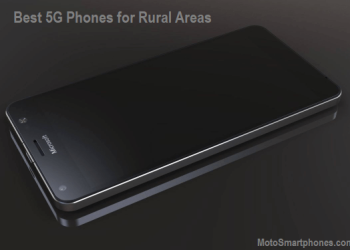
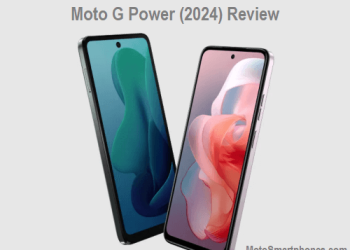




Discussion about this post